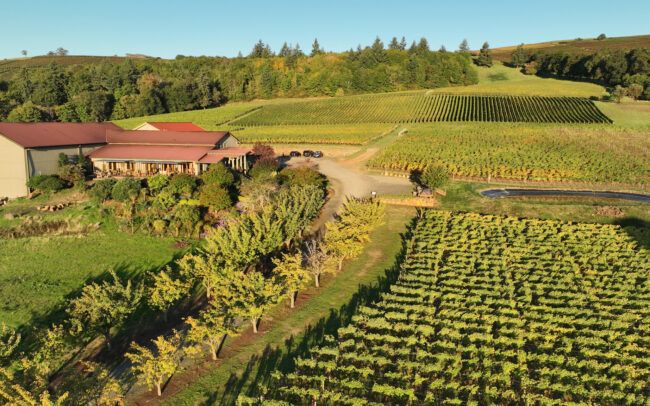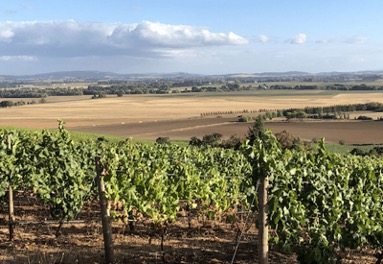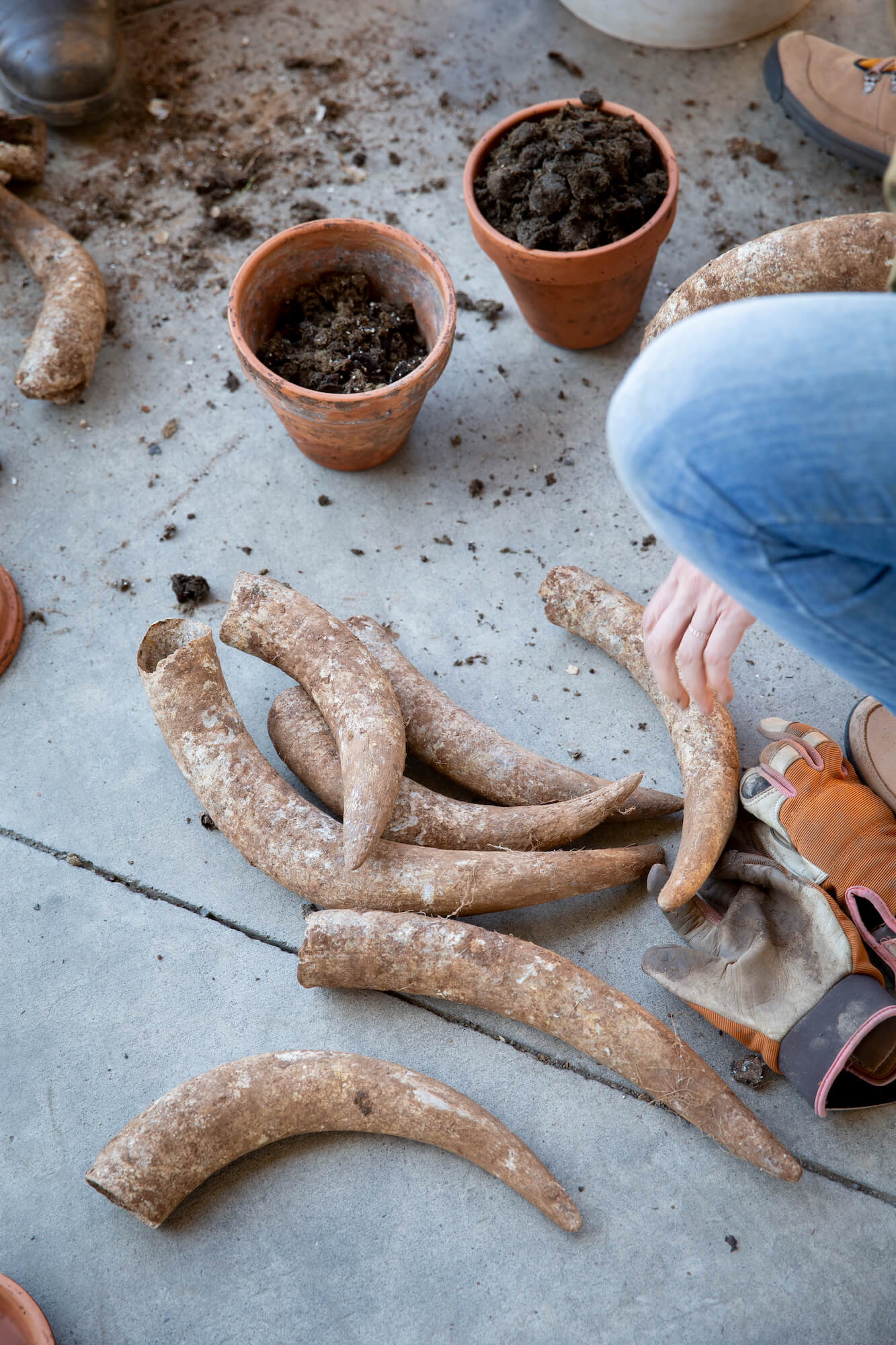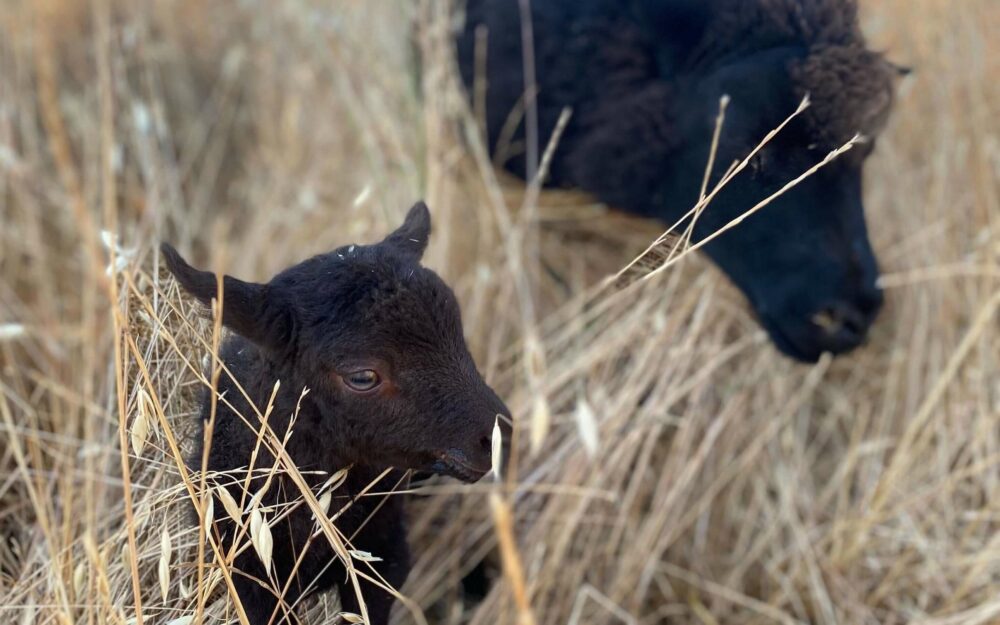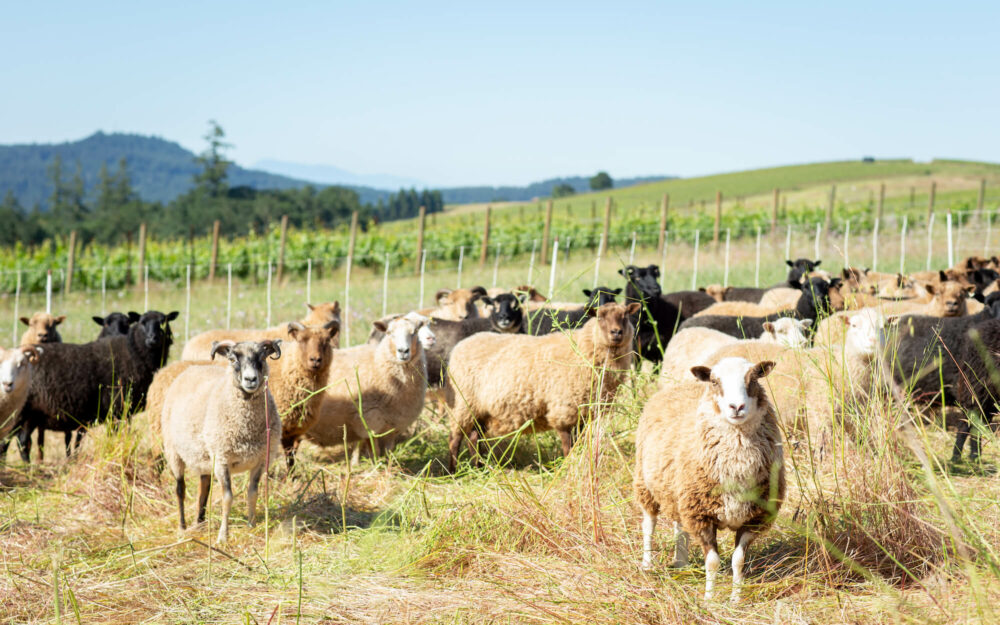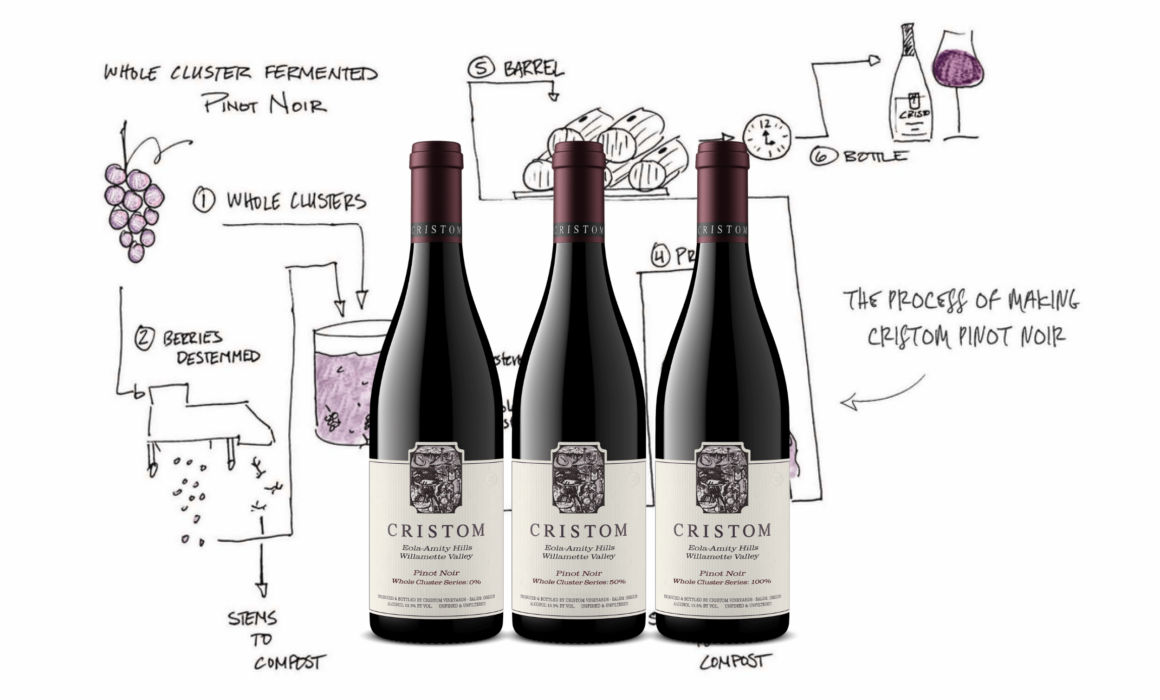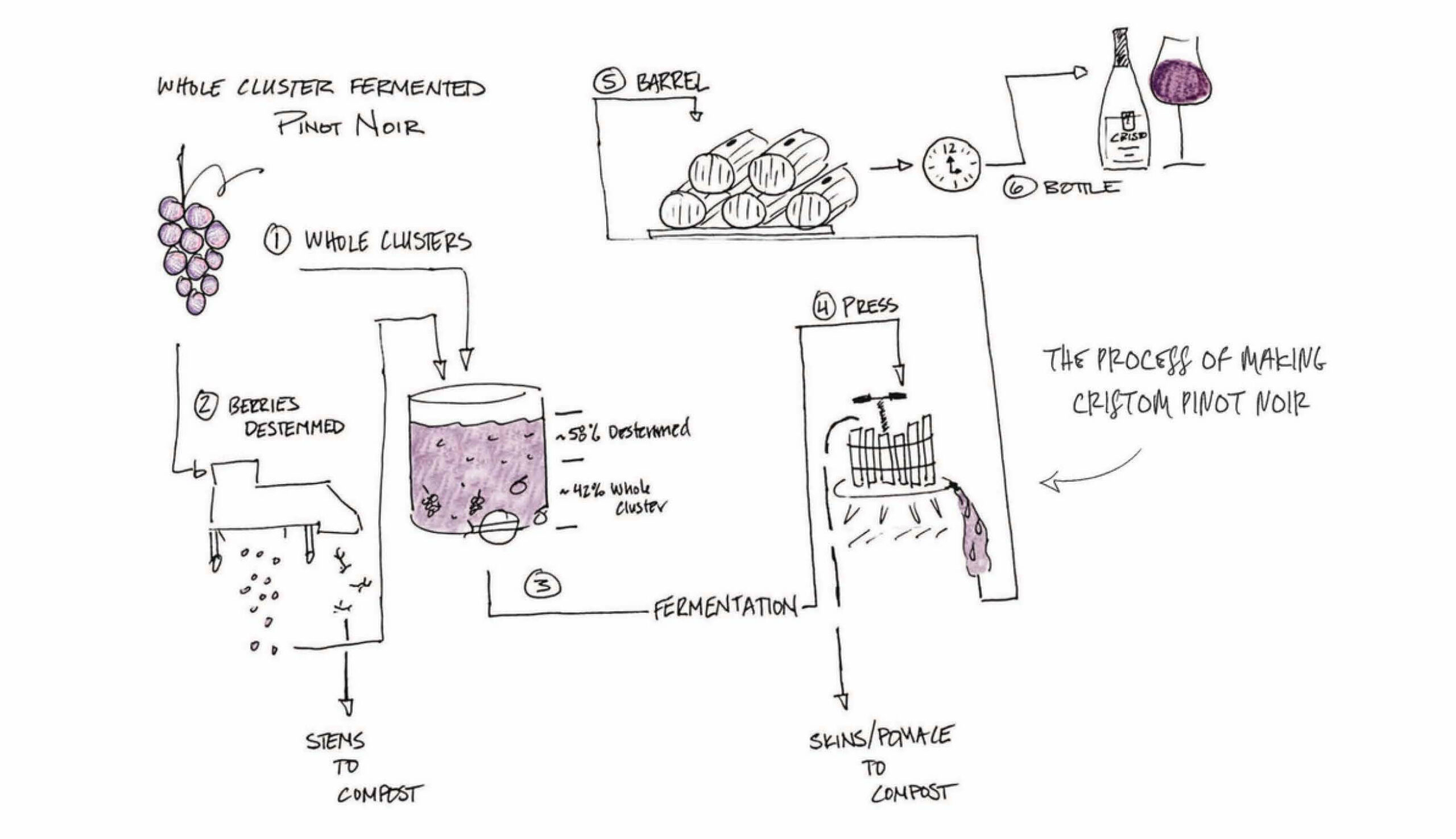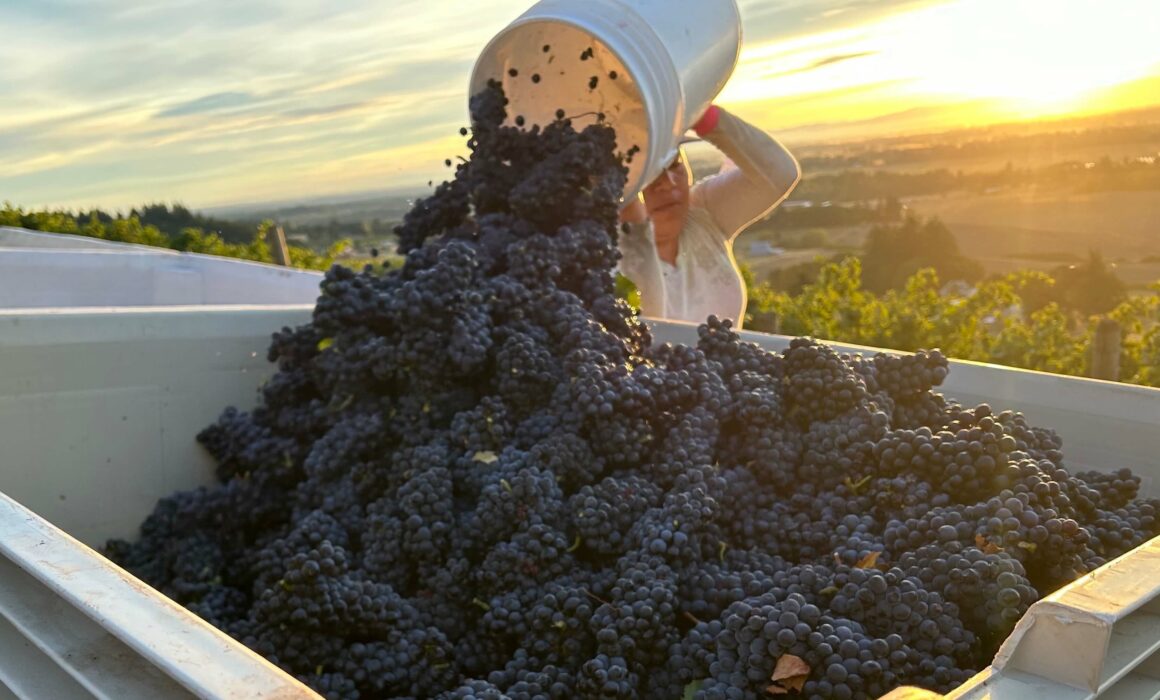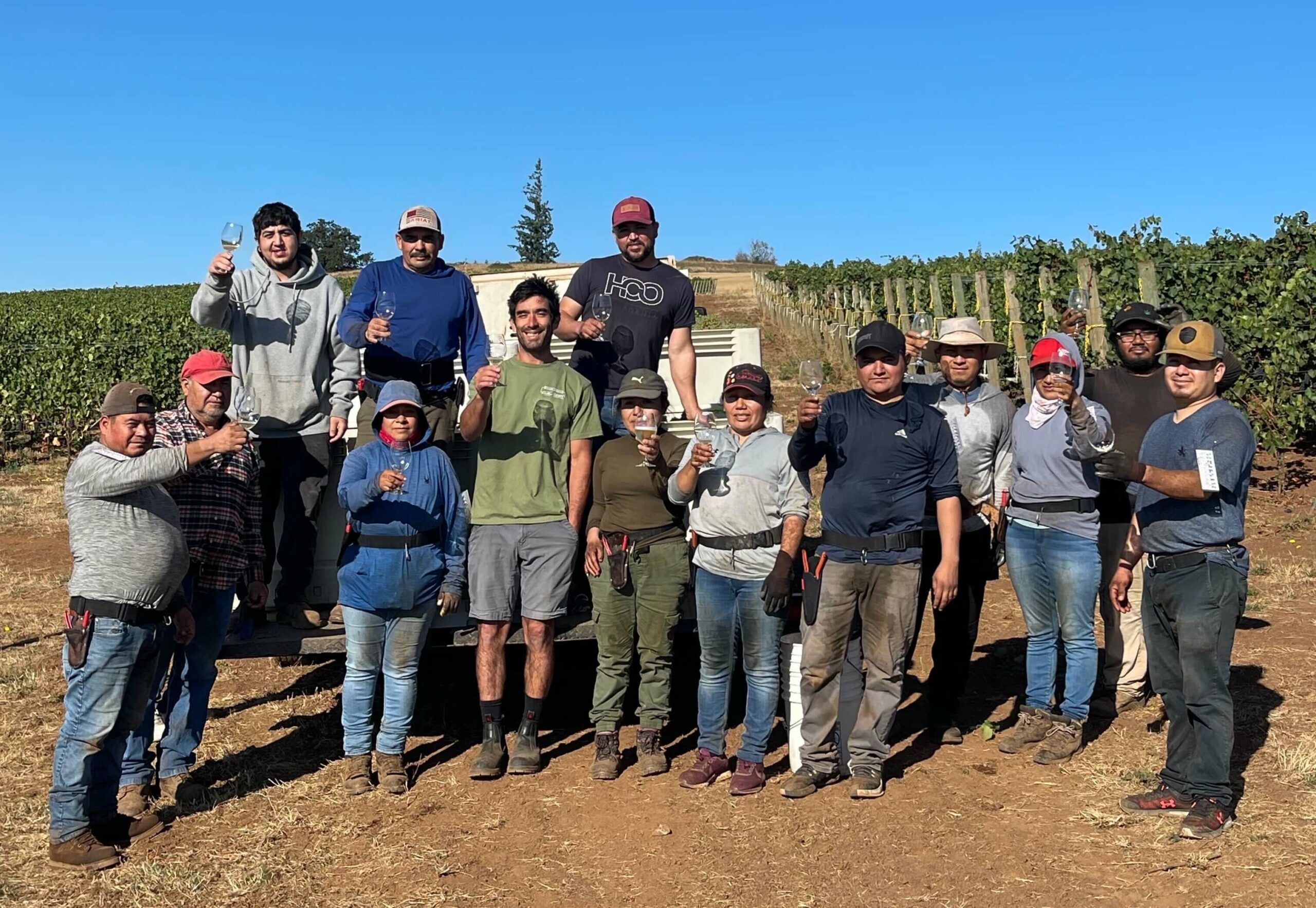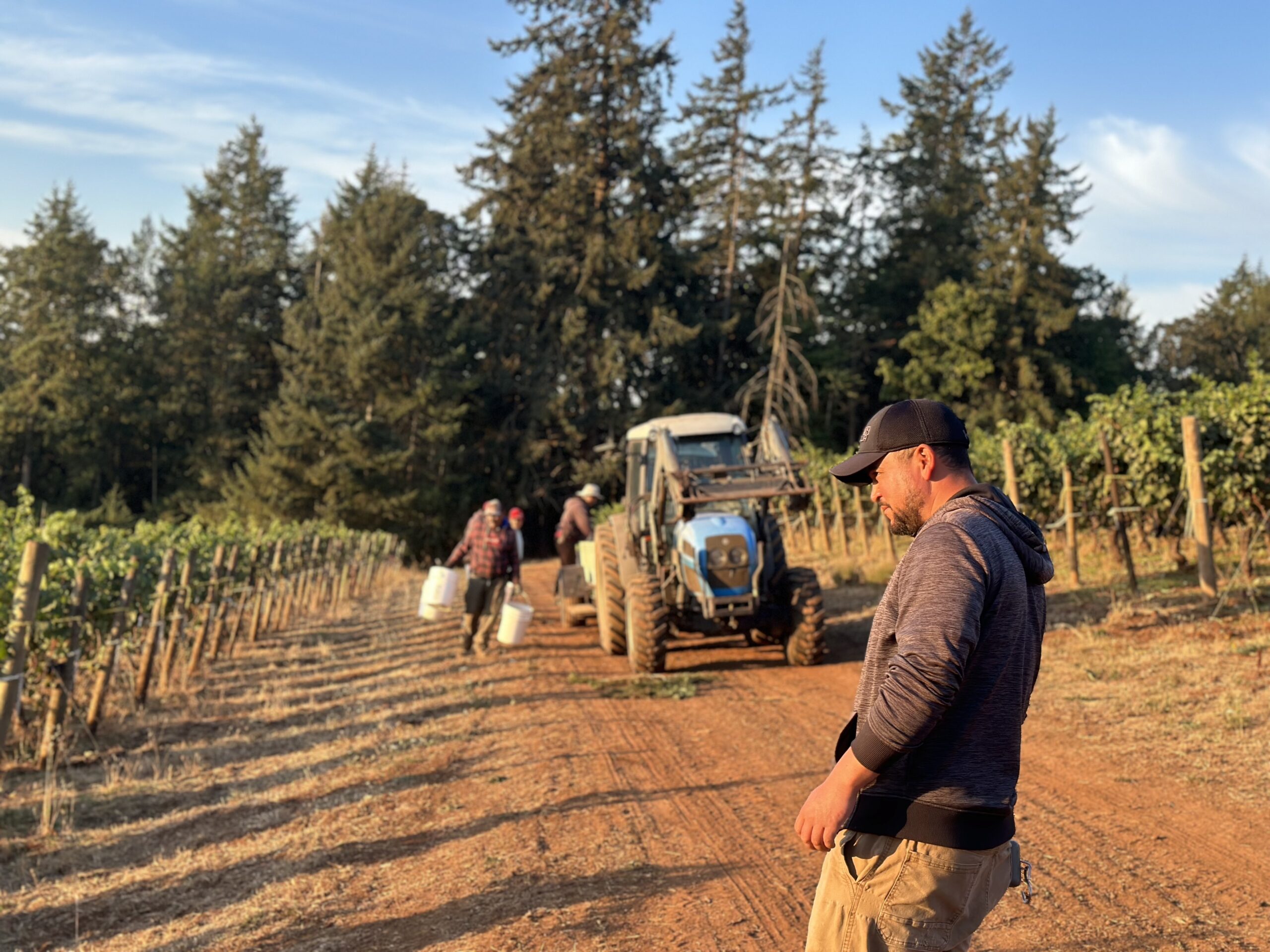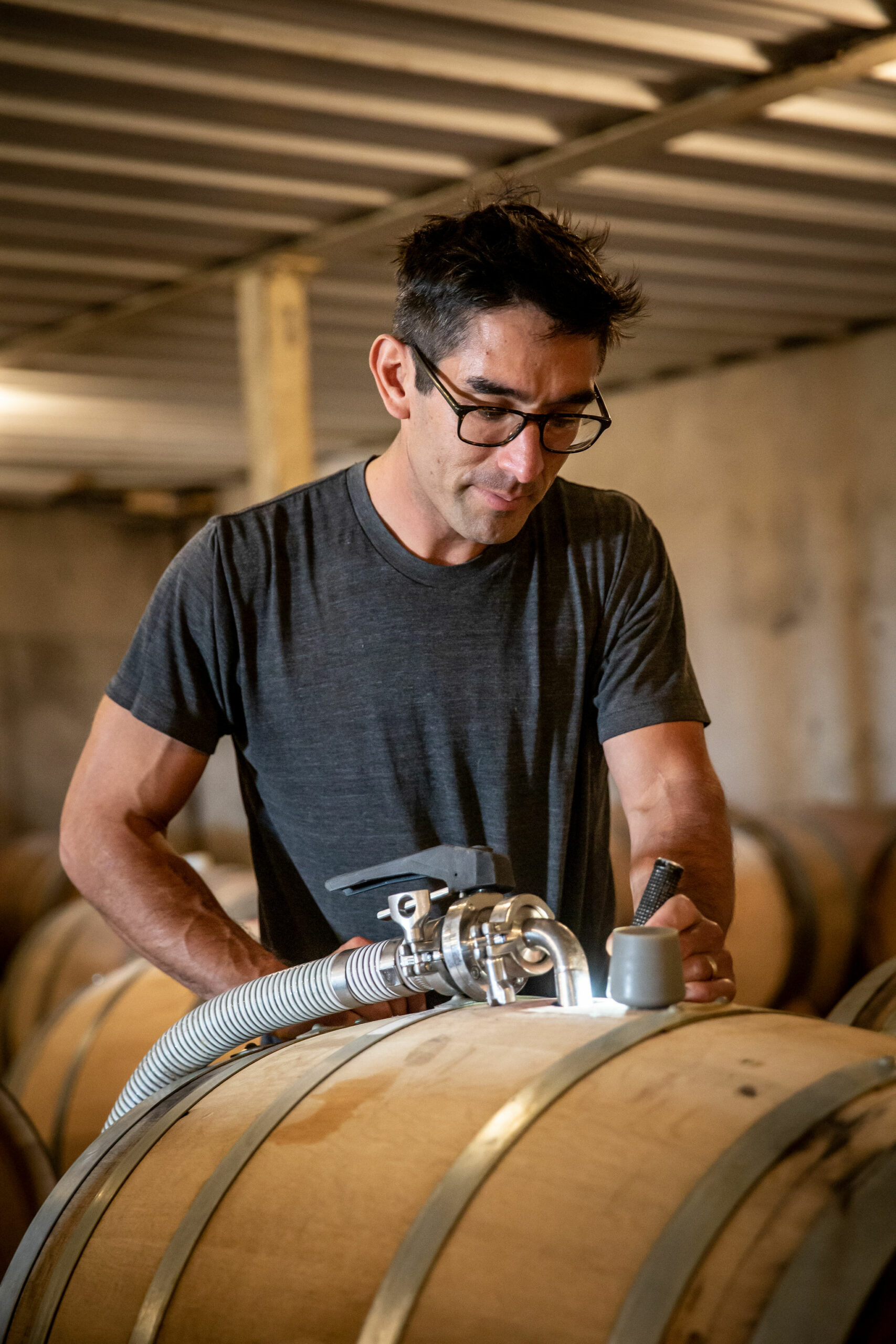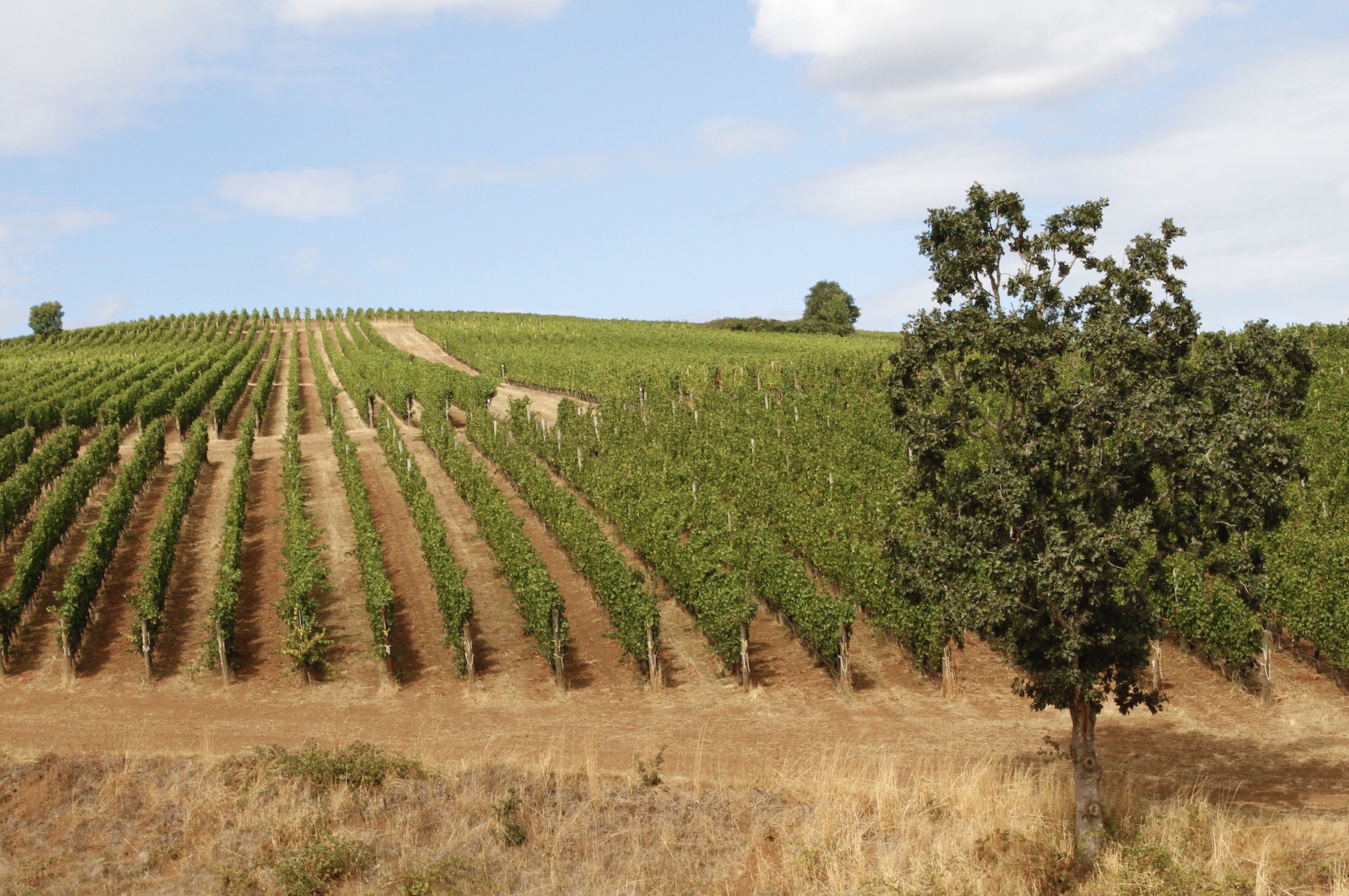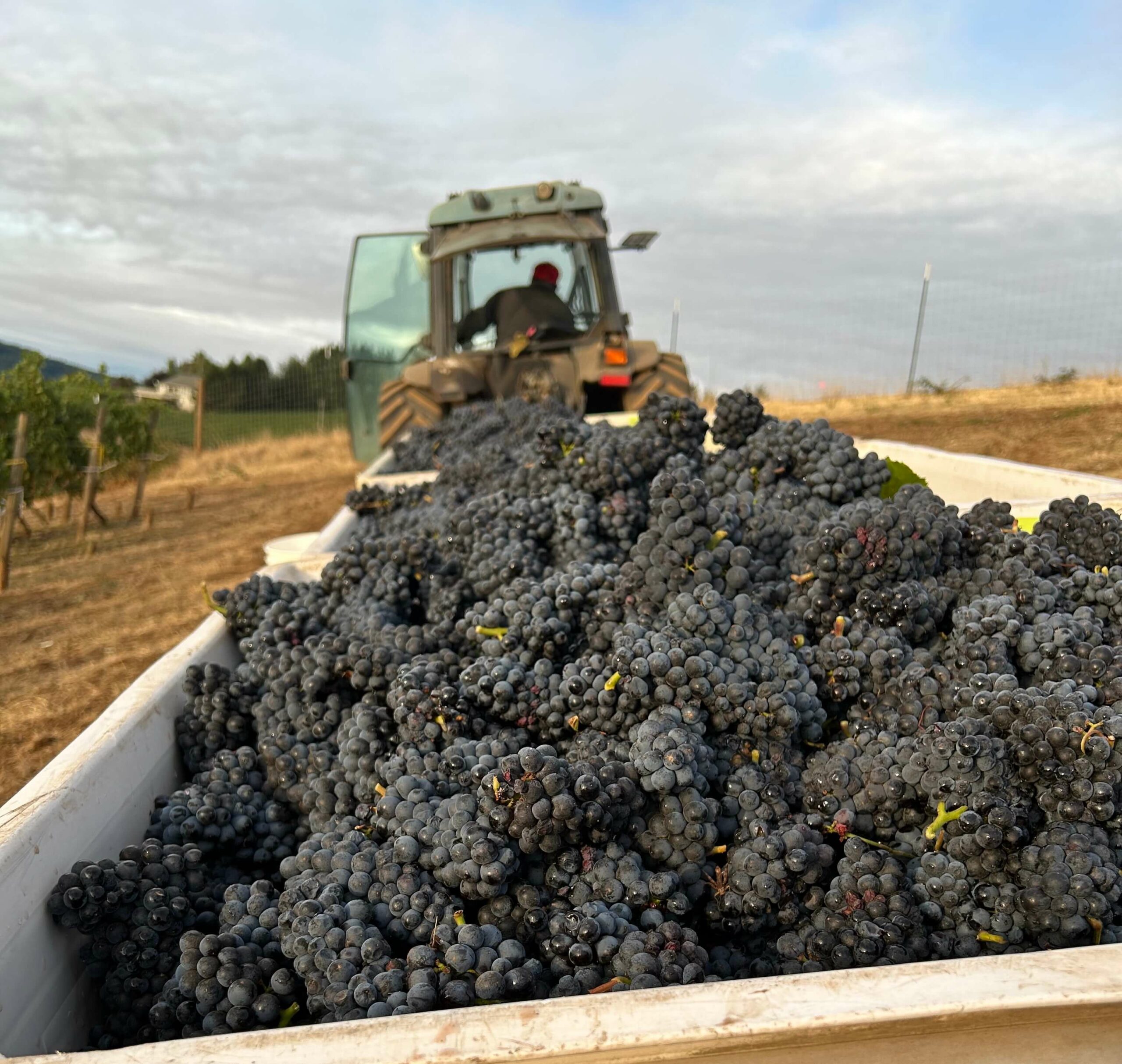WILLAMETTE VALLEY AVAS
WILLAMETTE VALLEY AVAs: BORN FROM FIRE & WATER
200+ MILLION YEARS IN THE MAKING—VOLCANIC BASALT AND MARINE SEDIMENTARY SOILS DIFFERENTIATE THE VALLEY AND MAKE IT UNIQUELY PERFECT FOR GRAPE GROWING.
This article content was aided by/adapted from information and imagery courtesy of the Oregon Wine Board via a Creative Commons License.

SUBDUCTION > IRRUPTION
The Willamette Valley is located within the “Ring of Fire,” an area of volcanic activity (75% of the world’s volcanoes and 90% of the world’s earthquakes) surrounding the edges of the Pacific Ocean. Just off the coast of the Pacific Northwest lies the Cascadia Subduction Zone (CSZ) caused by the Juan de Fuca Plate moving east toward the North American Plate (continent) and subducting underneath it.
The Willamette Valley and its unique soils and topography are the result of hundreds of millions of years of volcanic activity. Over 200 million years ago, Oregon was under the Pacific Ocean. The gradual subduction of the Juan de Fuca tectonic plate created Oregon’s oldest mountains and added land mass.
Roughly 16-6 million years, the plate continues to subduct, uplifting sedimentary soils, such as Willakenzie and Wellsdale, developed from sandstone and siltstone on the ocean floor to form the Coast Range above water and land mass in the Chehalem Mountains, Ribbon Ridge, and Yamhill-Carlton districts.
Multiple fissures created one of the largest volcanic events on Earth, and lava flows throughout northern Oregon, creating Basalt bedrock that formed the valley and the Cascade Mountain Range and accumulating enough landmass for Oregon to be above water. Over the millions of years that followed, the weathering of the Columbia River Basalt bedrock created the basalt soils that form a patchwork of volcanic soil series predominantly found in the Chehalem Mountains, Dundee Hills, McMinnville, and Eola-Amity Hills sub-AVAs.
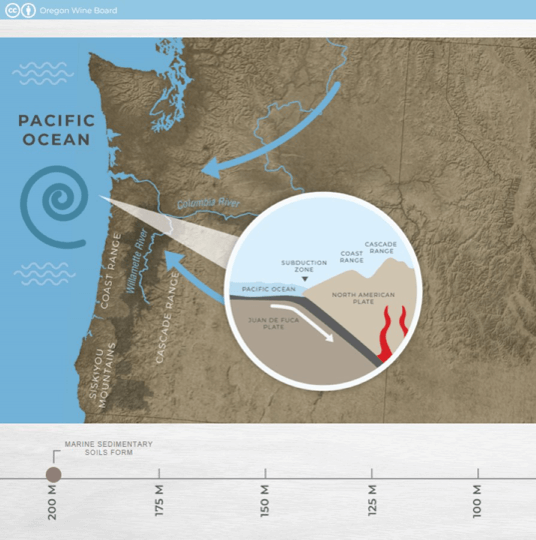

THE VALLEY AT LARGE
The Willamette Valley stretches 150 miles (240 km) long – from the Columbia River in Portland in the north to the Calapooya Mountains outside Eugene in the south – and 60 miles (97 km) wide. It is largely protected by the Coast Range to the west and the Cascade Range to the east. The valley experiences damp, cool winters and warm, dry summers. It has an extended growing season due to the northern latitude providing extended daylight hours, which are tempered by a large diurnal temperature shift from day to night.
The AVA was established in 1983, and subsequently, sub-AVAs were formed within its borders which now total 11.
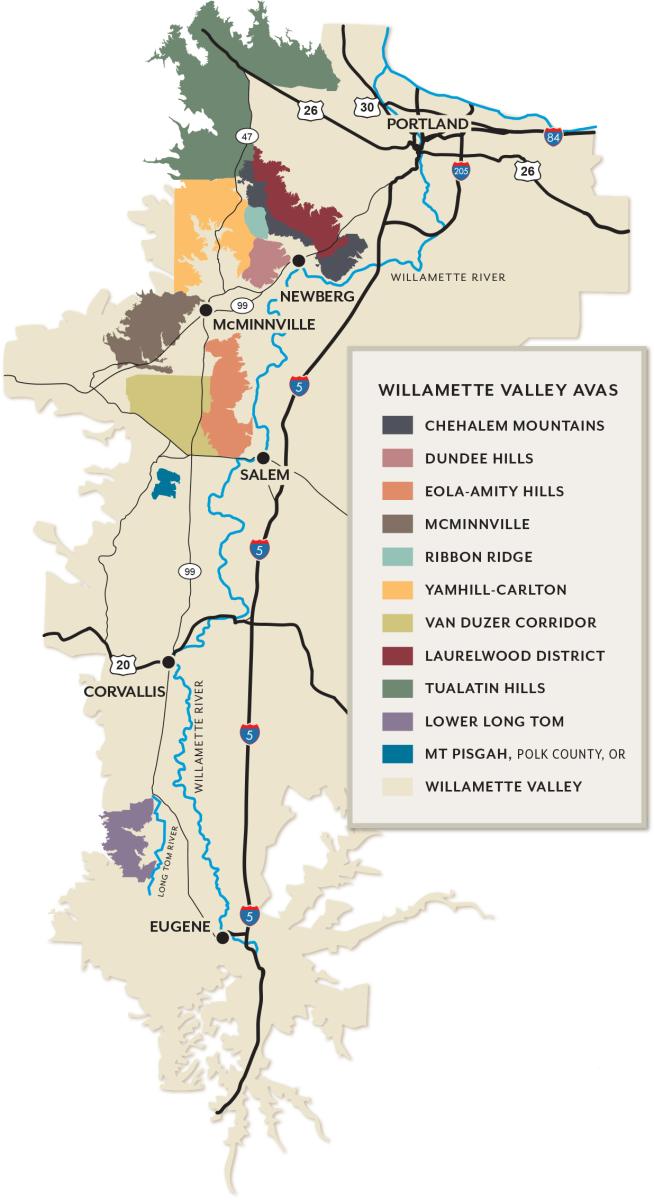
Willamette Valley AVA Map courtesy of the Willamette Valley Wineries Association
45° NORTH: EOLA-AMITY HILLS AVA
Halfway between the North Pole and the Equator, and the same latitude as Burgundy, lies the Eola-Amity Hills (EAH) sub-AVA of the Willamette Valley, home to the 45th parallel North and the Cristom Vineyards Estate. Both experience similar daylight lengths and cool climates. Though, they differ in soil types.
The north and east sides of the AVA and the upper hills are predominantly Basaltic soils, including Jory, Nekia, Witzel, and Gelderman, among others, while the west has a concentration of Sedimentary soils. Missoula Flood Silts can be found along the lower-lying edges surrounding the EAH. It is common to encounter multiple soil types in a single vineyard, depending on its altitude. This JancisRobinson.com article provides more insight on the soil’s impact on the wines of this region.

The Eola-Amity Hills AVA is influenced and primarily defined by the predictable, cool afternoon breezes that blow off the Pacific Ocean and enter the valley through the Van Duzer Corridor, which is due west of the region. These winds significantly temper the vineyard temperatures after warm sunny days, cooling the fruit to create small berries with great natural acid retention and thick skins, which leads to a higher skin-to-juice ratio in winemaking.

The Cristom Estate is nestled into an east-facing volcanic hillside that rises from 200-800 feet in elevation. We are stewards of five world-renowned estate vineyards – tributes to our founders, Paul and Eileen Gerrie, and family matriarchs – which are unique in their varied aspects, richly diverse soils, clonal diversity, and micro-climate.
Our east-facing orientation allows the morning sun to warm the patchwork of volcanic soils across the Estate, which range from shallow – only 18-24 inches of topsoil before transitioning to fractured Basalt parent material – to deep – over six feet of topsoil. This soil diversity is a true hallmark of our property and lends itself to diverse single-vineyard bottlings and harmonious cuvées, such as our Mt. Jefferson Cuvée Pinot Noir.
Additionally, Cristom partners with several esteemed neighboring vineyards that contribute to our flagship Pinot Noir. Recently, we have also crafted single vineyard Grower Pinot Noir such as our 2021 Eola Springs Vineyard and Seven Springs Vineyard, the 2022 Björnson Vineyard Pinot Noir, from whom we also source Gamay fruit for our AVA blend, and the 2023 Holmes Hill Vineyard Pinot Noir. Witness Tree, our direct neighbor to the north, and Five Points vineyard have provided the Pinot Noir we use to craft our Rosé. Beginning with the 2021 vintage, we have also crafted single-vineyard Chardonnay from Royer and Seven Springs vineyards.
The wines from the Eola-Amity Hills AVA are bright, fresh, and structured, with a slightly darker and edgier personality creating a balance of tension and generosity.
THE ‘RED HILLS OF DUNDEE’: DUNDEE HILLS AVA
The Dundee Hills are defined by the ancient (15 millon years), deep Jory volcanic soil, volcanic basalt known for excellent drainage and the oxidized red coloring – famously known as the “red hills of Dundee.”
Additionally, the climate is slightly warmer than other Willamette Valley AVAs due to its position between the Coast Range and Chehalem Mountains, which shelters it from Pacific Ocean breezes.

Oregon wine pioneers David Lett of The Eyrie Vineyards, Dick Erath, Erath Winery, and Susan Sokol and Bill Blosser planted many of Oregon’s first vineyards in the mid-1960s to early 1970s in what would later be established as the Dundee Hills AVA in 2004.
Cristom has a partnership with pioneering Arcus and Durant Vineyards, both established in 1973. The fruit we source comprises our Dundee Hills AVA Pinot Noir blend, as well as our Durant Vineyard Pinot Noir.
The wines from this AVA are pure and elegant, offering distinctly bright, penetrating red fruit and florals in cooler vintages to notes of plum, earth and chocolate in warmer vintages.
AN “ISLAND-LIKE” RIDGE: RIBBON RIDGE AVA
The Ribbon Ridge AVA is a separate uplift nestled within the Chehalem Mountains that extends 6.1 square miles and rises to 680 feet, giving it an island-like appearance. The ridge comprises 40 to 50- million-year-old marine sedimentary Willakenzie soil.
Similar to the Dundee Hills, the region is shielded from the cool ocean winds from the surrounding higher-elevation AVAs.
The well-drained, consistently fine, and moderately deep soils derived from sandstone and siltstone, paired with less rainfall and warmer temperatures, typically produce perfumed Pinot Noirs with red florals, citrus notes, spicy characters, and defining bright acidity.

Cristom has worked with the pioneering Ridgecrest Vineyard, established in 1982, Tristaetum Vineyard, and Armstrong Vineyard. The fruit we source comprises our Ribbon Ridge AVA Pinot Noir blend, as well as our single vineyard designate, Trisaetum Vineyard Pinot Noir.
The wines from the Ribbon Ridge AVA are typical expressions with bright acidity, floral and spicy aromas, and complex dark fruit flavors.
ANCIENT SOILS FORM A “HORSESHOE”: YAMHILL-CARLTON AVA
The Yamhill-Carlton AVA is composed of ridges of ancient marine sediments—some of the oldest soils in Oregon—that form a horseshoe shape. It’s sheltered from the Pacific Ocean breeze by its position between the Coast Range, the Chehalem Mountains, and the Dundee Hills, resulting in a warmer climate.

Cristom works Lemelson’s Stermer Vineyard, established in 1997 and Abbott Claim Vineyard. The fruit we source comprises our Yamhill-Carlton AVA Pinot Noir blend, as well as our single vineyard designate, Stermer Vineyard Pinot Noir.
Vines are planted over coarse-grained, well-drained soil. Combined with warmer growing season temperatures, this AVA typically has the earliest harvest dates in the Willamette Valley and typically produces texturally driven wines with rich, expansive, dark fruit, purple florals, earth, and spice.
COAST RANGE FOOTHILLS: McMINNVILLE AVA
Vines in the McMinnville AVA are planted in some of Oregon’s oldest and most geologically complex soils. Thin topsoil on top of unique marine bedrock, called the Nestucca Formation, forces vine roots deep into the earth, causing them to struggle and resulting in dark, complex flavor profiles.
Similar to the Eola-Amity Hills, the region is influenced by the cool ocean winds blowing through the Van Duzer Corridor to the south. The effect is the same – the cool and dry microclimate leads longer hangtimes, producing distinctly pronounced wines with bright acidity, great structure, and increased tannins.

Cristom had a partnership with pioneering Hyland Vineyard (est. 1971, one of the oldest vineyards in Willamette Valley) and Meredith Mitchell Vineyard (est. 1988 with own-rooted vines). The fruit we source comprises our McMinnville AVA Pinot Noir blend, as well as our Meredith Mitchell Vineyard Pinot Noir.
The wines from the McMinnville AVA are intense, with powerful tannins, high acidity, and fruit-forward profiles displaying flavors of dark fruit, spice, earthy, and mineral notes.
2022 was our final vintage for this appellation.
AN EXPRESSION OF TIME & PLACE
Cristom Vineyards was established in 1992 by the Gerrie family to grow and craft distinguished wines of place that honor individual sites and traditional techniques – which extends beyond our own estate vineyards. Since our founding, we’ve also sourced fruit from world-class vineyard sites across sub-AVAs within the Willamette Valley.
This fruit is vinified using the same neo-classical methods—whole-cluster fermentation (Pinot Noir) or whole-cluster pressed (Chardonnay) and native yeast fermentations—indicative of our hallmark style. Barrels are selected to add complexity, texture, and layers to our Mt. Jefferson Cuvée Pinot Noir and Eola-Amity Hills Chardonnays and our AVA Series Pinot Noir. Some barrels are designated to craft dynamic single-vineyard Pinot Noir and Chardonnay expressions that translate a specific site and vintage. All of these wines offer the opportunity to explore structured, cool-climate, volcanic Pinot Noir and Chardonnay from the Willamette Valley of Oregon.

AN EXPLORATION IN TERROIR
Cristom’s flagship 2023 Mt. Jefferson Cuvée Pinot Noir and flagship 2022 Eola-Amity Hills Chardonnay, as well as our single vineyard Chardonnay, Winery Exclusive Pinot Noir, 2022 Gamay Noir, and Gathering Kits featuring our AVA Series and Single Vineyard Grower Pinot Noir, highlight the distinctive profiles of three of Oregon’s premier AVAs mentioned above. Many of these are winery-exclusive wines, available for purchase in our online shop or in our tasting room.
For the AVA Series wines, download the Tasting Mats for a comparative experience:




